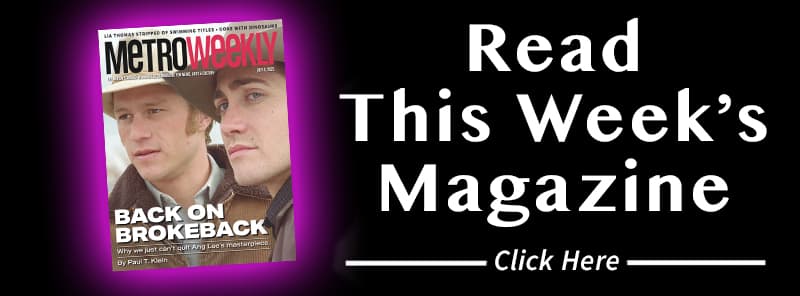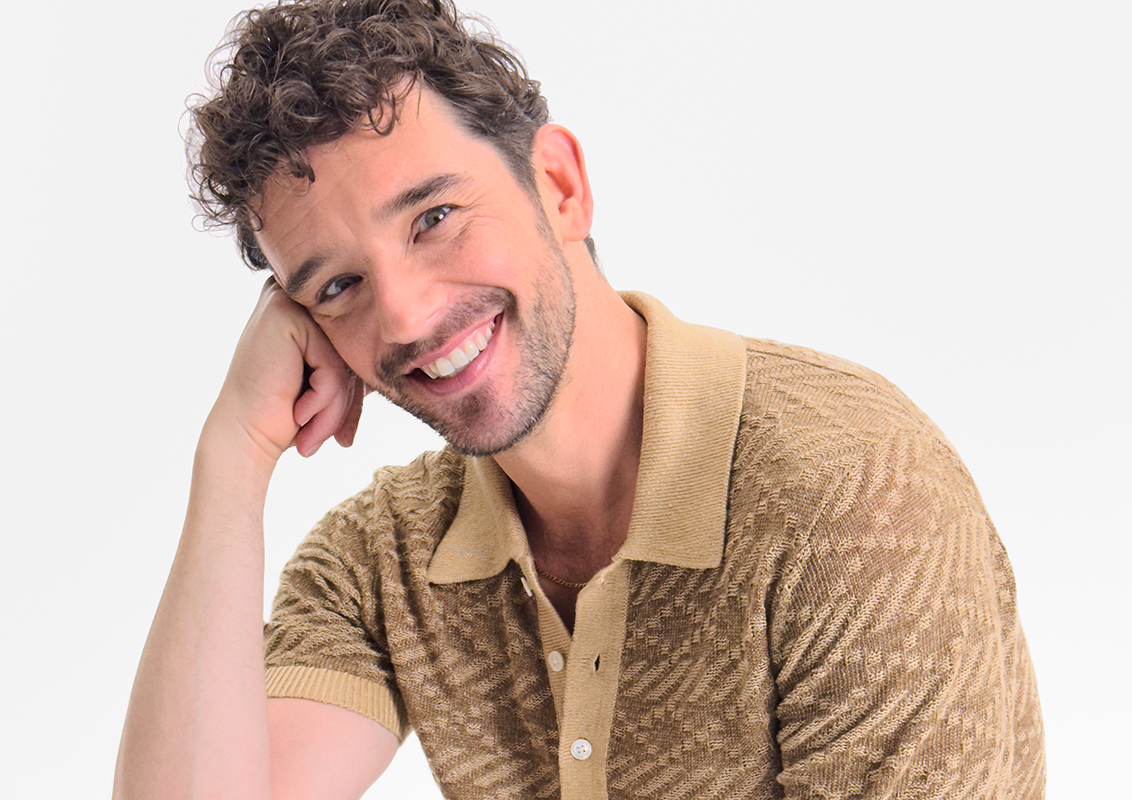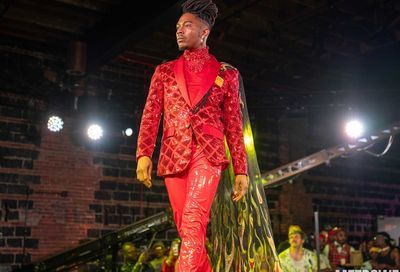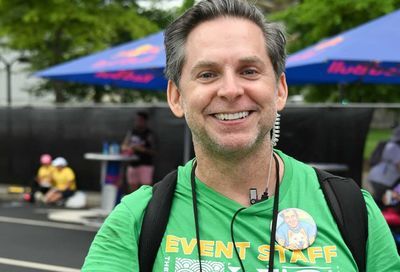Love is Strange: An interview with director Ira Sachs
Through his work and in his life, filmmaker Ira Sachs has strived to create a sense of community and mentorship
Four years ago Ira Sachs made a short, simple, powerful film, a sort-of requiem to New York and the generation who came before him. Last Address features exterior shots of buildings still standing that previously housed artists, from Keith Haring to Robert Mapplethorpe to David Wojnarowicz — all of whom were lost, far too soon, to AIDS.
“To me, arriving in New York in 1988 and seeing all of the people that I might have been mentored by die was something that is a deep part of me,” says Sachs, a 48-year-old who moved to New York from his native Memphis. “We lost most of that generation.”

It’s easy to overlook and hard to overstate the toll the AIDS epidemic took on people like Sachs, who were young and impressionable at the time and are still standing today, healthy and outwardly unscathed. But those early years in New York colored Sachs’s world, and he concedes that only in recent years has he been able to fully come to terms with it. Sachs sees his latest film, Love Is Strange, his fifth feature-length, as another kind of elegy to the previous gay generation — but one offering hope and a brighter outlook. The film focuses on the marriage of a long-term gay couple, played by John Lithgow and Alfred Molina, and the strong supportive “family” — both by blood and by community — they’ve cultivated.
“Generationally, for many, the possibility for a sustained romantic relationship is not what we were born into,” says Sachs, who is raising two-year-old twins with his partner of seven years Boris Torres, who has since become his husband of almost three. In his work and in his own communal family in Manhattan, Sachs has striven to create a sense of community — and even more, a sense of mentorship.
The goal is to give people “a sense of how people live their lives…and what they can gain from that knowledge, sharing that knowledge.”
METRO WEEKLY: Like so many of your previous films Love Is Strange touches on key aspects in your life.
IRA SACHS: All of my films are personal, to be honest. They’re not autobiographical, but I come at being a filmmaker from a place of trying to share with the audience things that I know very intimately. So I try to make intimate films. And I think for that reason they’re very personal.
MW: Is there any one way you would describe Love Is Strange to gay readers specifically?
SACHS: It’s a love story. It’s about two men who’ve been together for years, who’ve faced a dramatic obstacle together. And the film reveals really the depths of their love. As such I think it’s a very romantic movie.
MW: But it’s a love story and a romance that touches on some of today’s hot-button issues, be it religious discrimination or the lack of a social safety net.
SACHS: That’s true. But those were not the compelling initiatives of the story. I wanted to make a film about a couple — I knew a couple, two men, my great uncle and his partner, who were together for 45 years. And my great uncle’s partner was a man named Ted Rust. And he was a sculptor, who died at the age of 99. He lived a fully creative life, in a way that I cherish. And there’s a generation of gay men that I know, that I admire. And I’m grateful for those who survived, that I’ve had the experience to know them. This film is an elegy to that generation, and to this precious group of people who grew up with very different opportunities as gay men than we do today. And also, in New York, were men who lived very creative and artistic lives and created a culture that I’m so lucky to be a part of.
MW: In a sense this film, in contrast to your short Last Address, is about those older gay men we did not lose to AIDS.
SACHS: Yeah, I think this film is in some ways about those who survived. You say it’s a timely film, and I would agree because of the issues involved. But more so, I personally couldn’t have made a happy gay movie five years ago myself, because that’s not something I knew. And I think the lightness of the film is one that is very much of this time. This is a great time of possibility for gay people, and I think this film speaks to that.
MW: It’s also a film that presents a gay couple and gay people at an age that, frankly, we don’t see culturally as often as we should.
SACHS: Well, we don’t see it with straight people, either. [Laughs.] We don’t see any films about people in their sixties and seventies. You know, this is also a film about generations. It’s a film centered on this older couple, but it’s got Marisa Tomei, it’s got Cheyenne Jackson, it’s got this kid, the wonderful Charlie Tahan — it’s a film about generations.

MW: In the film Cheyenne Jackson plays a gay cop in a relationship with another cop, and both are neighbors to Alfred Molina’s character George. How did you come up with that angle?
SACHS: I thought Cheyenne Jackson would be a perfect gay cop, which he is. A perfect kind-of combination of Rock Hudson good looks with totally open sexuality. And I know two gay cops. My husband, Boris Torres, lived in a house in the West Village — on one floor was a man in his seventies who owned the house, Boris lived on the second floor, and on the third floor were two gay cops. And that kind of communal family was one that I wanted to put into the movie.
MW: And by extension you’re presenting life in an urban environment, especially in Manhattan, which becomes a character itself.
SACHS: Yeah, I wanted to make my own Manhattan. You know Woody Allen’s film was certainly influential to us, but I wanted to make a film with a similar sense of the music of the city, but also with the diversity of the city, which is something that I feel is very much part of my own life.
MW: You’re originally from Memphis. When did you move to New York?
SACHS: I had my first job in New York the summer of 1984, and I moved there full time in January of 1988 — so at the end of the eighties. I came to New York at the time of ACT UP and when the AIDS epidemic was in full force. And also a time when artists were not having the same sort-of expectations that they do now. It was a less bourgeois time, to be honest, as a city. There was a kind-of hunger to create and to make marks on culture that was very influential.
My first feature was a film called The Delta, which was about a young gay teenager growing up in Memphis. And I then did not have a gay character in a film of mine for about 12 years. I’m very interested in why, as gay artists, it is so difficult to make paying and sustained careers where we tell stories about gay lives. And it is difficult. There’s very little economic support, and there’s very little cultural support on some level. So in my 40s, I think what I’ve done — because I’ve now made two films that are explicitly gay in their stories — is that I’ve had to remind myself of when I first moved to New York, when to be an artist was to take a lot of risks and not to try to play it safe. And to be as open as possible.
MW: And will that be the focus of your work going forward as well?
SACHS: Well, I’m working on a film about two boys in New York, who are 10 and 11. And it’s the first in a trilogy that my co-writer Mauricio Zacharias and I have planned. It’s actually about real estate and friendship and the birth of a kind of gay sensibility in one child.
MW: You’re now rooted in New York. Would you ever move back to Memphis?
SACHS: No. I’ve never for a minute thought about living anywhere else but New York. I ended up making two films in Memphis, The Delta and Forty Shades of Blue. And I have a rich personal life there, of friends and family. I just spent two weeks there with my family this summer. So it’s a part of me, but I’ve been an inhabitant of New York for 25 years. And my husband grew up in New York, and I think — it’s still exciting. I still find it personally stimulating. And I’m excited now to share it with my kids. And in my movies even more. I feel like I wasn’t ready to make a film about New York until it was in my blood, it was deep. Now I feel like I understand the energy of New York pretty well.
MW: Did you grow up in a big family?
SACHS: I came from an upper-middle class Jewish family in Memphis that was extended — lots of cousins, in a very warm, embracing family. And I’m very close to my family now. And I think that’s a lot of what Love Is Strange is about — what is our responsibility to each other as family, whether that means by definition biological, or communal? I feel like I live in a very communal family in New York. And I’m interested in how we live in groups, and the distinction between being an individual, being a couple, or being part of a community.
MW: How long have you and your partner Boris been together?
SACHS: We have been together for seven years. We got married in January of 2012 — seven days before we had twins. So we had what I call a gay shotgun wedding, to make sure we were legal before the kids arrived.
My husband has been very involved in my work. He did a bunch of paintings for Keep The Lights On, they were in the opening credits of that film. And he did the paintings for John Lithgow’s character in Love Is Strange. So we’ve kind of got a creative and fertile relationship. [Laughs.]
MW: How did you have the twins, Eva and Felix?
SACHS: We are raising the kids with their mom, who is a documentary cinematographer and lives next door to us. We don’t get into the biological details. They’re our kids, period. We’re a three-parent family in two apartments. It’s really been wonderful.
MW: I would imagine 10 years ago children might not have been something you thought would be in your future.
SACHS: Well, I was actually trying for about 10 years to have kids. It’s something that I always wanted. But I think — you don’t tend to do things until you see other people doing them. That’s where culture changes. I was not going to be the vanguard. And, also, I was a mess in my thirties, to be honest. I think it was well-timed for me, to wait until I was a bit older. But I also think the culture wasn’t ready. There weren’t many gay people having kids, at least gay men.
MW: Do you anticipate creating a film featuring gay parents, based on your experiences now?
SACHS: That may be down the road, yeah. I think of being gay as just one element of who I am. And I think that’s what I try to do in my movies — gayness doesn’t define my characters, any more than their race or their gender fully defines them. It’s an element of their personality that I try to be attentive to. But I get these comments — ‘Wow, your gay characters aren’t clichés of gay people.’ And I’m always like, ‘Yeah.’ As if the expectation is because they’re gay that I’m going to write them badly. [Laughs.] It so underestimates the potential for what is possible in representation of gay lives.
MW: Speaking of queer representation, you organize a Queer/Art/Film series at the IFC Center in New York, and you’ve also created an affiliated Queer/Art/Mentorship program. What is that program?
SACHS: We’re in our fourth year of Queer/Art/Mentorship. We pair and support mentorship between established queer artists and emerging queer artists in five disciplines [literary, film, performing arts, visual and curatorial arts]. All of this communal work, for me, came out of actually working on the Obama campaign — I was very involved in the 2008 campaign. Which just meant that I was good at organizing my friends. I wasn’t involved in any way other than as a grassroots organizer. And I have taken that as a way of living. I think without that I wouldn’t have been able to make Love Is Strange. It wouldn’t have existed without the support of the LGBT/queer community. Twenty-five individuals paid for Love Is Strange — 23 of them are LGBT, and 20 of those are lesbian businesswomen.
MW: Is it fair to say mentoring is something you feel compelled to help foster now in part because you missed out on that yourself due to the AIDS epidemic?
SACHS: For me, there was an absence of any sense of mentorship — both people I might have known and also people I might have watched, because their lives were cut short. And I have felt this huge gap. You know, I think any artist actually has to forge his own way, but we can collectively make it easier for each other in some way. I was on stage with John Lithgow in New York at a Q&A recently, and I was talking about my great uncle’s partner Ted Rust and how inspiring he had been to me, and the influence he had on [the character of] Ben. And then I’m looking at John Lithgow, who this summer has been doing King Lear for Shakespeare in the Park [in New York]. He’s about to do an Albee play on Broadway. He’s opening this movie. And I thought, he is inspiring, that at this point in his life he’s taking such risks, creatively. That he isn’t sitting back and saying, “I made a lot of money on 3rd Rock from the Sun and I’m going to hang out by my pool.”
This movie is a form of mentorship. I think that’s what the character of Joey gets from living with Ben, which is a sense of how people live their lives and what they can gain from that knowledge, sharing that knowledge.
MW: Each month your Queer/Art Film series invites an artist to present a work that inspired or influenced his or her work. What work would you pick?
SACHS: Oh. I mean I used to think I would pick the 1983 film l’Homme blesse [The Wounded Man], which I recommend, by Patrice Chéreau. It’s about an obsessive gay man who’s pursuing another guy at a train station in France. But I don’t relate to that film personally as much as I used to. Recently, I thought of Grease. So clearly something has shifted. [Laughs.]
MW: You haven’t done a musical yet.
SACHS: No, but I love musicals. And I’m working on turning Love Is Strange into a musical. Because I think it’s written as one. I think it hits all the emotional high points. It’s got everything that I love in a good musical.
MW: Finally, I wanted to ask about a little case of title trivia. You had a 2005 movie called Forty Shades of Blue, and while I know it’s an inspired twist on an old Irish phrase and a Johnny Cash song, still, you can’t help but think of E.L. James’s book Fifty Shades of Grey — which came out six years after your film.
SACHS: Oh yeah. I just wish I was getting some residuals. [Laughs.] You know, all art is inspired by other art. So I don’t feel like I was robbed.
Love Is Strange opens Friday, Aug. 29, at area theaters. Visit fandango.com.
Support Metro Weekly’s Journalism
These are challenging times for news organizations. And yet it’s crucial we stay active and provide vital resources and information to both our local readers and the world. So won’t you please take a moment and consider supporting Metro Weekly with a membership? For as little as $5 a month, you can help ensure Metro Weekly magazine and MetroWeekly.com remain free, viable resources as we provide the best, most diverse, culturally-resonant LGBTQ coverage in both the D.C. region and around the world. Memberships come with exclusive perks and discounts, your own personal digital delivery of each week’s magazine (and an archive), access to our Member's Lounge when it launches this fall, and exclusive members-only items like Metro Weekly Membership Mugs and Tote Bags! Check out all our membership levels here and please join us today!


























You must be logged in to post a comment.